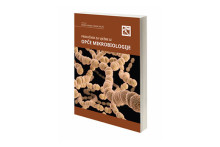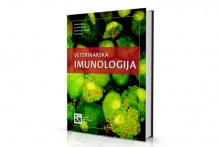
Over 200 Never-Before-Seen Viruses Discovered Lurking in Frogs, Fish, And Reptiles
Researchers have found 214 RNA viruses that have never been seen before, lurking inside animals usually ignored when it comes to viral infections – frogs, fish and reptiles.
Not only does the finding have implications for studying human virology in the future, it also shows that viruses have an evolutionary history dating back millions of years – and they evolved concurrently with vertebrates.
“This study reveals some groups of virus have been in existence for the entire evolutionary history of the vertebrates – it transforms our understanding of virus evolution,” says study co-author, epidemiologist Eddie Holmes from the University of Sydney, Australia.
“For the first time we can definitely show that RNA viruses are many millions of years old, and have been in existence since the first vertebrates existed.”
RNA viruses draw their genetic material from ribonucleic acid, rather than DNA – and these types of viruses include many human diseases such as the flu, the common cold, and even Ebola.
Although some RNA viruses have previously been found in newts and salamanders, little research has been conducted into viruses that affected other amphibians, fish and reptiles.
Holmes and his team looked at the RNA of over 186 species, including reptiles such as snakes, turtles and lizards; amphibians such as frogs, salamanders and caecilians; and fish such as jawless, cartilaginous, ray-finned, lancelets and lungfish.
Read more here or in paper published in Nature.
Mogućnosti zapošljavanja
National Institute of Biology Announces Fully Funded PhD Position in Viromics
Rok za prijavu: 06.06.2025
Projekt "U Društvu mikroba"
Osnovna svrha projekta je doprinijeti uvođenju, razvoju i održivosti programa društveno korisnog učenja na fakultetima. Više o projektu
Zanimljivosti
Projekt Virtulab
VIRTULAB je virtualno umrežen znanstveno-istraživački laboratorij za primarne i sekundarne sirovine.Naša članica, prof. dr. sc. Dijana Škorić u podkistu o koronavirusu i cjepivu
Podkist je podcast Zavoda za komunikacijske i svemirske tehnologije (ZKIST) u kojem se razgovara o znanstvenim i tehnološkim temama te temama povezanim sa studiranjem i učenjem. Cilj je u opuštenoj atmosferi približiti najnovija znanstvena istraživanja široj publici, dati studentima širi pogled na to što uče te poslušati savjete starijih kolega o studiranju, radu i napredovanju u profesionalnoj karijeri.Postani član HMD-a
Cilj Društva je okupljanje mikrobiologa i stručnjaka srodnih struka s ciljem unapređenja svih grana mikrobiologije.
Skupovi HMD-a
7th Central European Symposium on Antimicrobials and Antimicrobial Resistance (CESAR2025)
Date: 22 - 25 September 2025
Venue: Zadar, Croatia
The 7th Central European Symposium on Antimicrobials and Antimicrobial Resistance (CESAR2025) will be held from September 22-25, 2025, at the Hotel Kolovare in Zadar, Croatia. This attractive tourist city, located in the center of the East Adriatic, is surrounded by stunning natural landscapes, making it an ideal venue for this important event.Ostali skupovi
Date: 4-6 November, 2026
Venue: Lisbon, Portugal
7th Croatian Congress of Toxicology with International Participation
Date: October 5-8, 2025
Venue: Rab, Croatia
12th Trends in Medical Mycology
Date: 19-22 September 2025
Venue: Bilbao, Spain
Izdavaštvo
Priručnik za vježbe iz opće mikrobiologije
Ovaj sveučilišni priručnik napisalo je petnaestak autora iz desetak visokoškolskih ustanova iz Zagreba i Rijeke, a sadržaj je podijeljen u petnaest, slikama bogato ilustriranih poglavlja u kojima su opisane i obrađene različite bakteriološke, virološke, mikološke, imunološke i molekularno-biološke metode koje se upotrebljavaju u općoj mikrobiologiji koja se studira na nizu različitih fakulteta i visokih škola.
Veterinarska imunologija
Radi se o vrhunskoj literaturi za potrebe visokoškolske nastave iz veterinarske imunologije. Knjiga je svojim sadržajem namijenjena prvenstveno studentima, ali i veterinarima u praksi i nastavnicima.
(Iz recenzije)
















